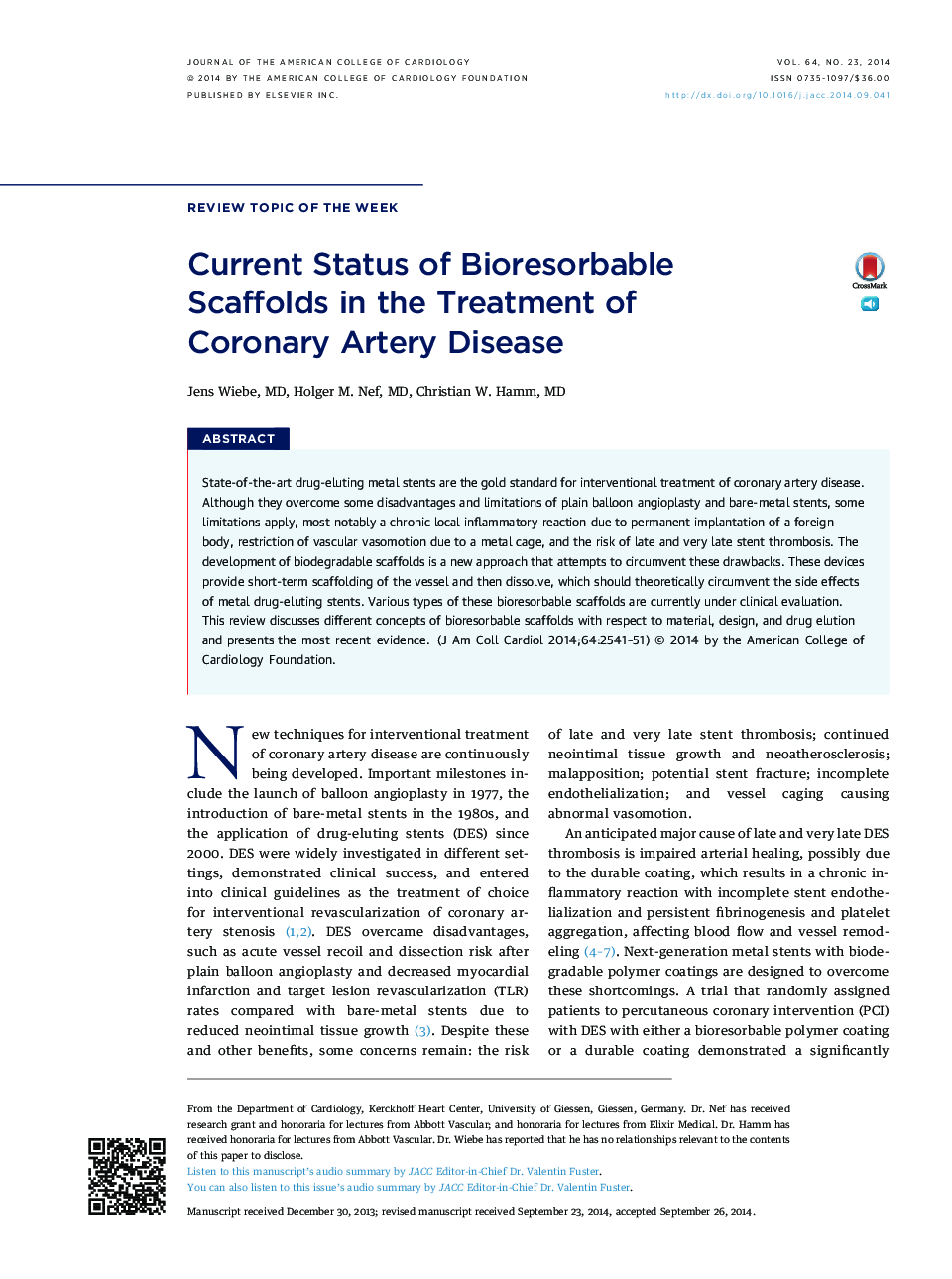| Article ID | Journal | Published Year | Pages | File Type |
|---|---|---|---|---|
| 2943984 | Journal of the American College of Cardiology | 2014 | 11 Pages |
State-of-the-art drug-eluting metal stents are the gold standard for interventional treatment of coronary artery disease. Although they overcome some disadvantages and limitations of plain balloon angioplasty and bare-metal stents, some limitations apply, most notably a chronic local inflammatory reaction due to permanent implantation of a foreign body, restriction of vascular vasomotion due to a metal cage, and the risk of late and very late stent thrombosis. The development of biodegradable scaffolds is a new approach that attempts to circumvent these drawbacks. These devices provide short-term scaffolding of the vessel and then dissolve, which should theoretically circumvent the side effects of metal drug-eluting stents. Various types of these bioresorbable scaffolds are currently under clinical evaluation. This review discusses different concepts of bioresorbable scaffolds with respect to material, design, and drug elution and presents the most recent evidence.
